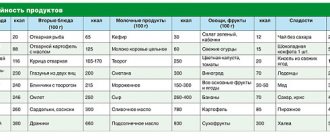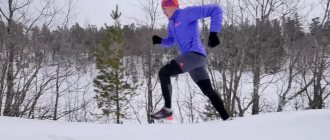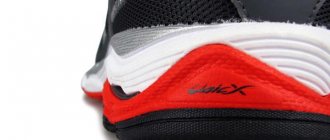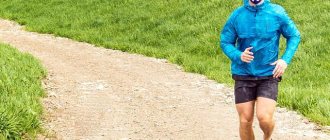Winter running is always a challenge. And although sub-zero temperatures make adjustments to the running regime, many athletes consider this time of year to be one of the best. The air is fresh and crystal clear, the paths are clear, and windproof suits are warm and comfortable.
Even if you've never run, don't be afraid to start in winter and don't put anything off, just take the advice of our experts and stay fit in any season. Let's answer the 10 most frequently asked questions about winter jogging.
What weather can you run in in winter?
Starting to run when it's frosty and snowy outside is much easier than you think. All you need is a clear goal, such as running a marathon or increasing your distance to 5 km. This is a good motivation to run in any weather.
- Work out for your health while it's down to −15°C outside.
- Hold off on active jogging at higher temperatures.
Extremely cold temperatures make it difficult for a runner to breathe
What are the dangers of running in winter?
Obviously, a low temperature and a greater likelihood of getting sick. But there are a few more reasons you should consider when weighing the pros and cons of winter running:
The danger and risk is that the likelihood of injury increases on snow and slippery trodden paths. Therefore, it is important to understand that winter sneakers and equipment must be selected specifically for weather conditions.
If the temperature is below 10°C, the risk of respiratory hypothermia increases, which can lead to serious illness. These troubles can be avoided by learning proper breathing and using a mouth mask.
There is a danger even if you run in the summer, the main thing is to follow the instructions and neglect safety measures. If you have never exercised before, much less run outside, don’t rush into winter jogging. It’s better to go to a sports club before it warms up.
How to avoid getting sick after a winter run?
When running, it is important that your clothes keep you warm and quickly wick moisture away from sweaty skin. Running equipment, similar in properties to skiing equipment, will help with this:
- Windproof insulated jacket with membrane or three-layer SoftShell material. For comfort and freedom of movement, choose a suit with a classic fit, such as the men's Craft Urban Thermal Wind or a similar women's one. Such clothes must have a wind- and moisture-proof membrane; the models have a classic, loose cut that does not restrict movement. If you plan to run in the dark, pay attention to a suit with reflectors. Any cross-country ski warm-up suit will also work.
Craft Urban Thermal Wind microfleece membrane suits are designed for running down to −20 °C
- Windproof tights or insulated pants. Tights are made of elastic material with compression. They reduce stress on the muscles and are therefore ideal for long distances. In severe frost, trousers with a membrane are more comfortable, such as the women's model Nordski (up to −25 °C), children's Nordski Motion, etc.
| In windy weather, start running against the flow and finish the distance with your back turned to it. In strong winds, alternate directions every 5-10 minutes. |
- Thermal underwear (two layers possible). The basic set consists of a long-sleeved shirt and leggings. 100% polyester styles like the Craft Baselayer quickly wick moisture away from the body and onto the top layer of clothing, keeping skin dry and warm.
Thermal underwear will prevent hypothermia or overheating. A variety of designs will allow you to choose a set that is also suitable for everyday wear.
- A hat or ear band. Down to −5 °C you can run in a thin, close-fitting hat with an anatomical fit. For colder weather, models with a fleece lining and a windproof membrane are suitable.
How warm your clothes should be depends on personal preference, body weight, pace and duration of running (sometimes even the wind!), but you should follow the following rule: if the temperature is −10, dress as if it were 0 °C outside.
- For short distances, low speed or body weight, add 10–15 °C.
- For longer workouts or larger body weights, add 20°C.
| +5 °C on the thermometer while running feels like +15…+20 °C. It will be a little chilly at first. Then the body will sweat, but if you are wearing thermal underwear, the moisture will quickly evaporate and you will not freeze. |
Immediately after your run, change into dry clothes. It is also useful to take a shower and drink hot tea or coffee.
When running in the dark, wear reflective clothing or a headlamp
Rules for running in winter
In winter, it is especially necessary to follow all the rules so that running will benefit you and strengthen your body, and not frostbite and worsen your condition.
Warm up before your run
There must be a warm-up, and it is necessary to work out all muscle groups. It is better to do this in a warm place, before going outside. It is enough to do a simple stretch, warm up the muscles, but not allow perspiration to appear, but if you ignore the warm-up, you can get injured.
Winter jogging should start from the threshold of the house to the place of jogging and back to the house without stopping. This is not difficult to do if you do not walk along the road from the house and to it, but run at a light jog.
All eyes on running
When training in winter, you need to focus on the process itself, because the surface on which you run can be slippery and there is a high probability of falling and getting injured. If you slip, you need to have time to group yourself correctly. The most dangerous sections of the route are the ascents, descents and turns. You need to be extremely careful with them.
Choose the right clothes
Running in winter is good for your health only with the right equipment. Mistakes that new runners make include wearing too much clothing, overheating, and eventually catching a cold. You need to dress as if the temperature outside is 10-15°C higher. A training suit should protect against the cold, but at the same time be light and comfortable so as not to restrict movement.
It is necessary to protect all parts of the body from blowing:
- Head. It is recommended to use masks and hats. You can buy special glasses that will improve visibility even during a snowstorm. The hat should cover your ears - you can wear a warm cap, a fleece hat or fur headphones. A scarf or special collar will protect your mouth and neck.
- Hands. Wool mittens retain heat better than gloves. If possible, you can purchase sports gloves. They will protect your hands from the cold and from impact if you slip and fall.
- Legs. Socks are an important part of your uniform. It is not recommended to wear cotton and wool, and preference should be given to products made of synthetics or fine wool with a thermal effect. In warm weather, one pair of sweatpants is enough. In cold weather, it is recommended to wear thermal leggings underneath.
Thermal underwear, sweatpants, fleece, warm socks, special winter sneakers, hat, mask - complete equipment for a runner in winter
Choose the right shoes
- The right running shoes will help protect your knees and joints from injury. Forget about summer lightweight sneakers, your feet will freeze instantly in them.
- Choose sneakers made from a material that is breathable and protects against the cold. Sneakers should not allow moisture to pass through, otherwise they will not protect your feet from hypothermia.
- For running and maximum traction on slippery roads, you need a sole with deep grooves and made from different materials. The thickness of the sole is also an important factor: the protection of the foot from frost depends on it.
- For complete confidence in the clutch, professionals purchase special fasteners - chains.
- Pay attention to the lacing - it should not interfere with movement.
How long to run and how often?
- Duration of jogging in the cold is up to 30 minutes. It all depends on the goal and level of preparation. If you haven't run before, start with interval running in small steps (alternate fast and slow pace every 5 minutes). If you weigh 100 kg or more, start with brisk walking.
- Jogging frequency. At least every day. If you're losing motivation, recruit a friend or join a group of local runners (social media can help). Jogging is also a great reason to meet with friends.
What to do after class
- After a run, you need to return to a warm room to warm up. Take off wet clothes and take a warm shower, dry yourself and change into warm clothes. If you feel chilly after the procedures, do some warm-up exercises or rub your body to get the blood flowing and warm up.
- Replenish the water-salt balance and drink 300-500 ml. warm water.
- You can eat after a run in 30-40 minutes. After training, it is not recommended to eat sweets, baked goods, salty foods, or coffee, because it leads to dehydration.
How to protect your eyes from the sun?
Sunglasses with polarized polycarbonate lenses with a UV filter will help protect against harmful ultraviolet rays. Due to their multi-layer nature, they do not distort the image and do not damage vision.
There are models on sale for runners, as well as skiers and cyclists. When choosing, consider the lens category:
- 3rd category – for bright sun, transmits no more than 18% of light. (Goggle Sport).
- Category 2 – for medium illumination, up to 43% light (Goggle Pevro).
- 1st category – for partly cloudy weather, up to 80% light.
When running with headphones, remember to be safe. You risk not hearing a car or cyclist overtaking
Air temperature
It is not advisable to go jogging in extreme cold. If the temperature drops to 20 degrees or below, it is better to stay at home or train in the gym. Otherwise, the risk of frostbite outweighs the intended benefit.
Don't forget about wind speed. If the temperature is not lower than 8-10 degrees, but it is very strong, it is also recommended to skip the lesson. The same applies to a snowstorm, during which running outside in winter turns into torture, since it is impossible to breathe normally and assess the situation around you.
Beginners are not recommended to start training in the cold season, but if the desire is too great, classes should be carried out in light winds and temperatures not lower than 7-10 degrees.
Where and when to run? Where is the best place to warm up?
Morning or evening – it doesn’t matter for running efficiency. When choosing, focus on the air temperature that is comfortable for you and the time that suits your schedule.
Warm up in a warm place (5-10 minutes). If you don't have an exercise bike or treadmill at home, jump rope or run in place for a couple of minutes. The main thing is to immediately go for a run after warming up, without a rest break.
If you have any questions about running at different times of the year, ask our consultants online or by phone. We will be happy to answer, advise, teach!
Winter running: obvious contraindications
You should start training only when you feel well. Even a slight runny nose is a contraindication, since cold air can aggravate the situation. If there are unhealed injuries to the lower extremities, physical activity is contraindicated.
List of diseases for which running is not recommended:
- thrombophlebitis;
- problems with the cardiovascular system;
- pathologies of the musculoskeletal system.
In each case, prior consultation with your doctor is required. Perhaps in some situations sports will be beneficial.
Don't strive for records when running in winter. In winter, under no circumstances set yourself the task of increasing any speed or endurance indicators. During this period, the main goal should be to improve the health of the body.
The benefits and harms of running for your body
If you decide to start running in winter, think carefully, because the consequences can be very different.
You need to consider all aspects of training in order to ultimately achieve good results and not regret your decision.
But first, let's learn everything about running outside in winter, study its benefits and harms.
Health effects
If you decide to go for a run, and the temperature outside has not yet reached -15, there is no strong wind at all, you will not find better conditions.
This is how you can achieve positive health results, as well as have a beneficial effect on muscles, all internal organs and immunity.
In spite of everything, the body will be hardened, in the future temperature changes will not make you tremble, and one cannot ignore the fact that in such conditions the lungs and heart are well developed.
Today, many are trying to spend the winter at home and go out less, but this is completely wrong.
By doing just one run, you get the necessary supply of oxygen that you won’t find within four walls.
One of the main conditions for a comfortable winter jogging is the right clothes.
Clean air is very important for the normal functioning of the whole body, which is why it is the main advantage of running in winter.
As for the negative, there is very little of it.
There are two basic rules that must be followed so that when jogging in winter you do not cause enormous harm to your body.
It is very important to choose the right clothes. Otherwise, you can get hypothermia and develop a huge list of diseases
Below you will find tips on how to avoid this effect.
If the temperature is very low, you risk burning your lungs. Therefore, if running in winter has become a discovery for you, you should not immediately rush headlong into the pool, follow all the instructions, and be careful. In the future, a scarf on your face or a special protective mask will help you cope with the cold air.
Remember to have three layers of clothing
Effect on the body and muscles in general
Running outside in winter is a huge benefit for any person’s body, but it must be approached with caution and prudence.
Its main benefits for muscles are:
- In winter, the paths are slippery, so many more muscles are involved in the work than when jogging on regular asphalt. The muscles of the thighs, buttocks, calf and ankle joint begin to work much better, thus becoming stronger.
- If you run in the snow, your thigh rises much higher, and at this time its front surface gets a good workout. In the summer, you have to force yourself to lift it for the same effect.
When it comes to the damage winter running can cause, you need to be very careful.
Before you start training, warm up your muscles well, otherwise they may simply tear when you start the cross-country.
Especially if there are obstacles in your way, it can be very easy to twist your ankle.
Don't neglect your warm-up, or at least run on a flat surface for the first ten minutes.
Warm-up is especially important in winter
Effect on excess weight
The main and significant advantage of exercising in winter over summer is that all muscles tense up greatly, thus receiving a huge load, regardless of whether you want it or not.
This is exactly what you need to lose extra pounds.
With the help of running, all fat is converted into energy, so we can conclude that in winter the chance of losing weight increases by approximately 30%.
It can be considered a universal remedy to say goodbye to excess weight.
Running outside in winter can also be harmful. The weather is quite changeable; it is not always easy to predict what it will be like tomorrow or even in the next half hour.
And to lose weight, you need constant, regular exercise.
Therefore, those runs that you manage to do will not be able to bring the expected result, because you will often need to sit out due to weather conditions.
You also need to remember that during the winter, our body voluntarily accumulates fat - this is the best heat insulator, so the body of any person is reluctant to part with its excess.
The chances of losing weight through winter jogging are 30% higher than those in the warm season
If you want to improve your performance in both middle and long distance running, learn proper breathing, technique, warm-up, and also focus on proper strength work.
Videos on the dangers and benefits of winter running can be a great help in this regard.











